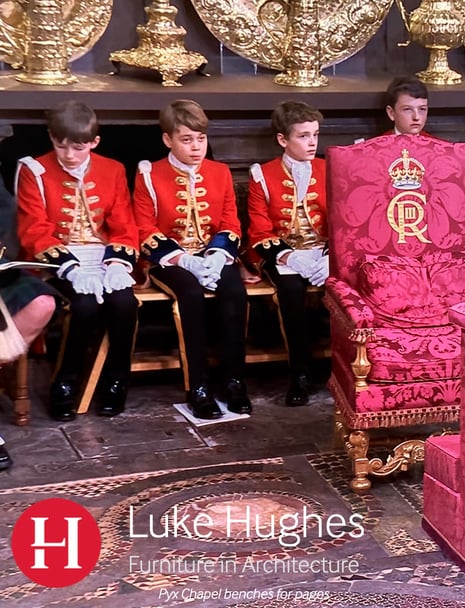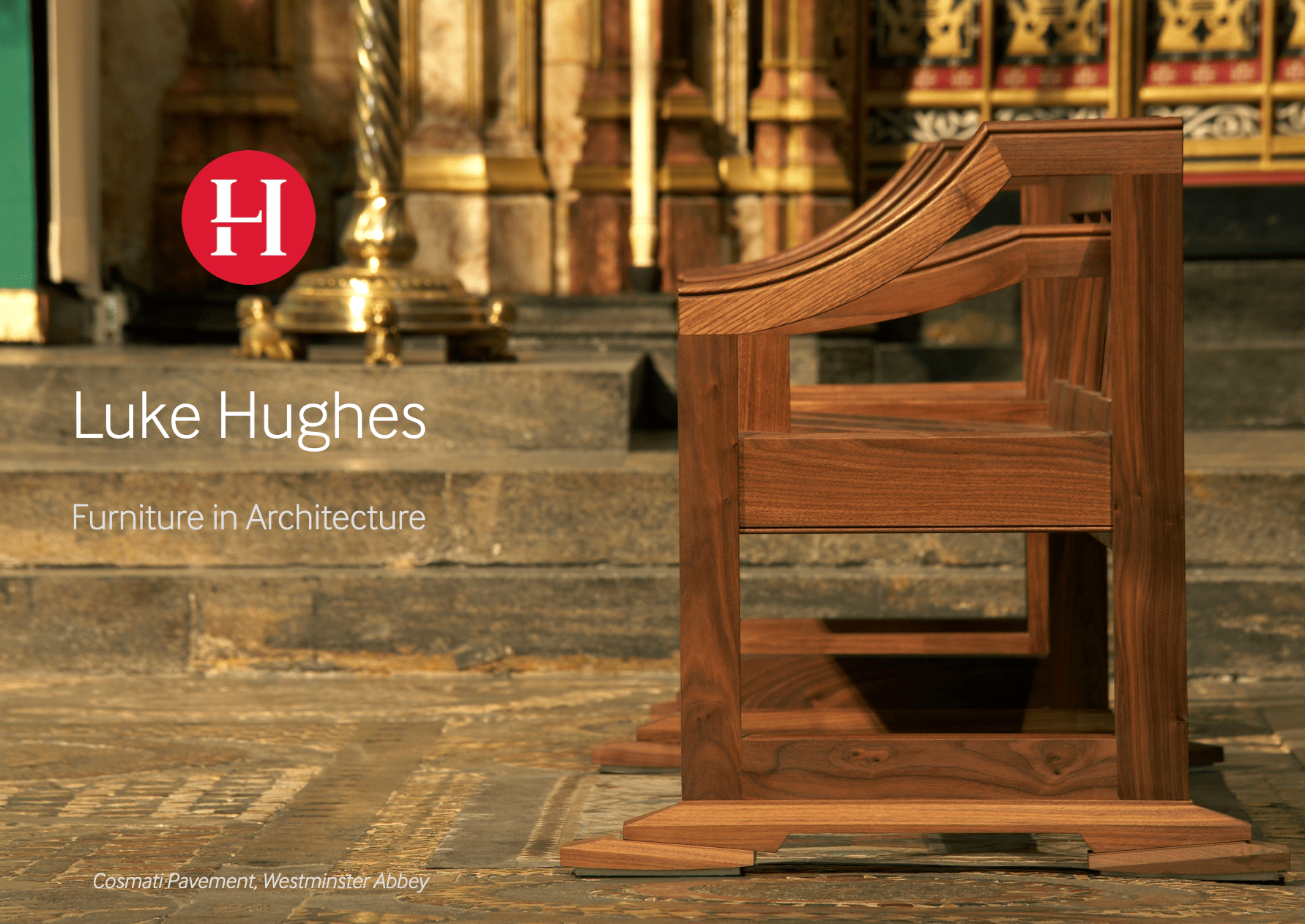Coronation? Westminster Abbey? Cosmati Pavement? Penny Mordaunt and that sword? All very much in the public eye recently (apparently, there were 450m TV viewers world-wide) but who knows the background behind some of the furniture?
In 2010 Luke Hughes was commissioned by the Dean and Chapter of Westminster Abbey to design and make new clergy seating to be used specifically for the Cosmati Pavement, the glorious and intricate mosaic in front of the High Altar and one of the most important medieval floors in Europe.
The pavement takes its name from the Cosmati family of craftsmen who originated this type of inlaid-stone decoration, using a variety of semi-precious stones including onyx, porphyry, turquoise, green serpentine and yellow limestone. The Roman Cosmati specialist, Odoricus and his team of craftsmen, completed the pavement in 1268 and is the finest surviving example of Cosmati work north of the Alps. Since the 1870s, however, it had been obscured by thick carpets, as well as having suffered the ravages of time. In 2009, the Dean and Chapter began to uncover and restore the pavement 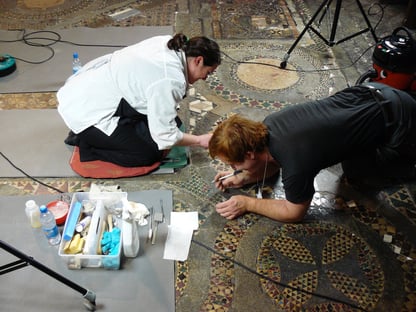 and commissioned Luke Hughes & Company to design new clergy furniture. The old Victorian oak seats – designed by George Gilbert Scott¬were heavy and difficult to move and, worse, likely to damaging the newly-reset semi-precious stones.
and commissioned Luke Hughes & Company to design new clergy furniture. The old Victorian oak seats – designed by George Gilbert Scott¬were heavy and difficult to move and, worse, likely to damaging the newly-reset semi-precious stones.
Further, the floor was so eroded over 750 years that it was pitted and uneven with variations of up to 40 millimetres. The challenge was to come up with seating for all the clergy who might be involved in major ceremonial roles – not only on state occasions but also during the liturgy of weekly worship – which was also light enough for the vergers to move. It had to be easy to stabilise on the undulating pavement.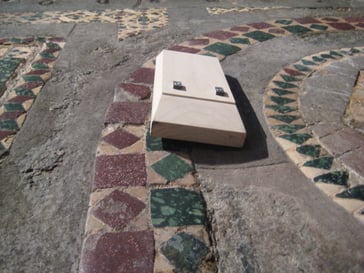
The solution? A series of felt-lined sliding wedges, which can be swiftly adjusted to take up any discrepancies in the floor levels, held in position by industrial-strength earth magnets to hold the wedges against a steel plate embedded in the feet. Thick felt strips are deeply inset into face of the wedges, which are also slightly curved. The vergers can pick up a four-seater and fix any discrepancy by simply nudging the wedges in or out. Walnut was used since it is about 60% of the weight of oak, the conventional timber for ecclesiastical seating. The shape and modelling of the pieces are loosely based on Charlemagne’s throne at Aachen, reputed to have been appropriated from the 6th century Basilica of San Vitale in Ravenna.
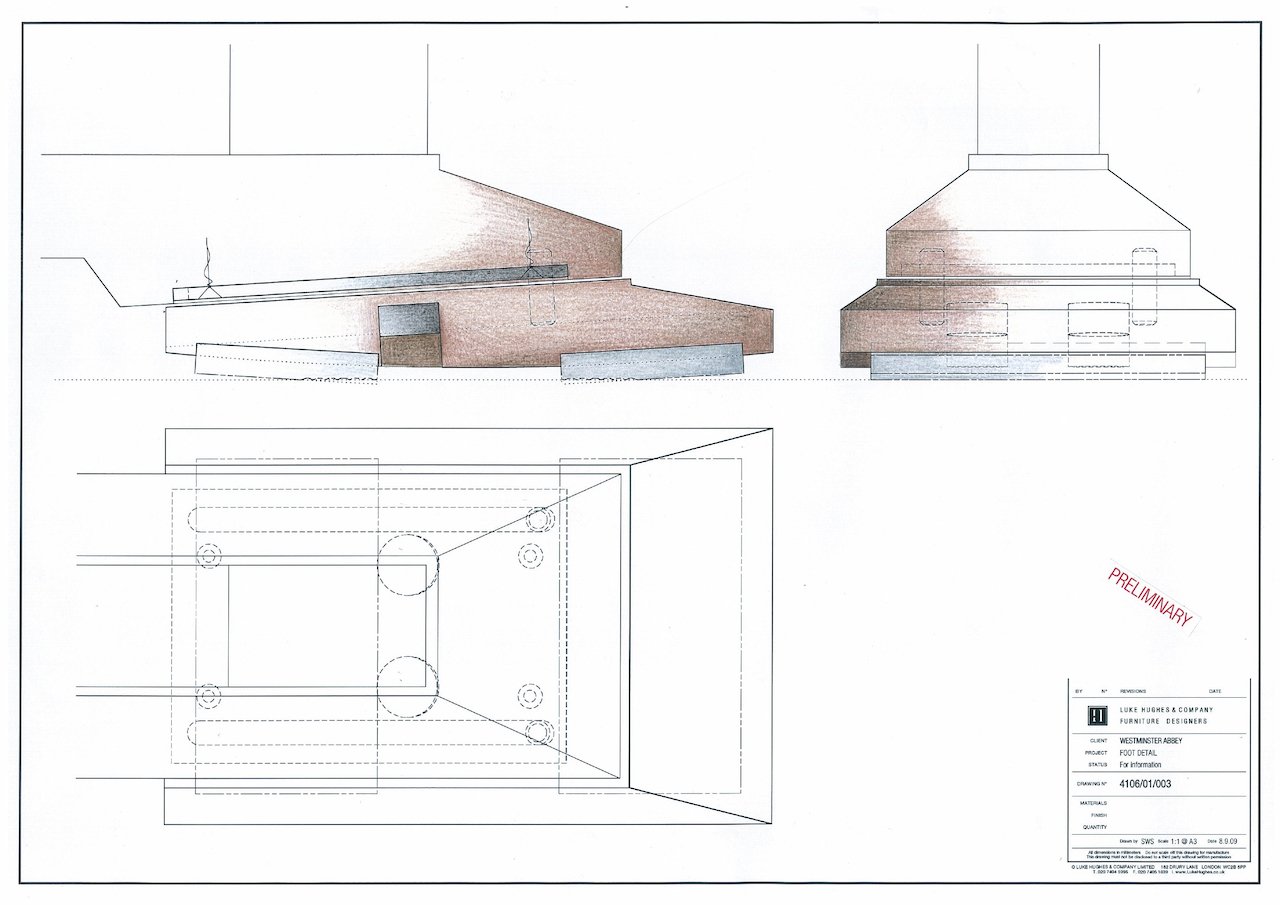
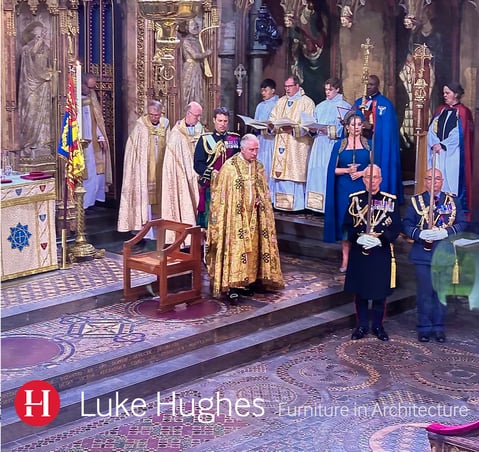
The furniture was first used for the Pope Benedict XVI's visit that year, then for the Royal Wedding of Prince William & Kate, and subsequently in official and state occasions, including the Queen's funeral and, most dramatically, the Coronation .
Other recent projects at Westminster Abbey include the Song School for the choir,
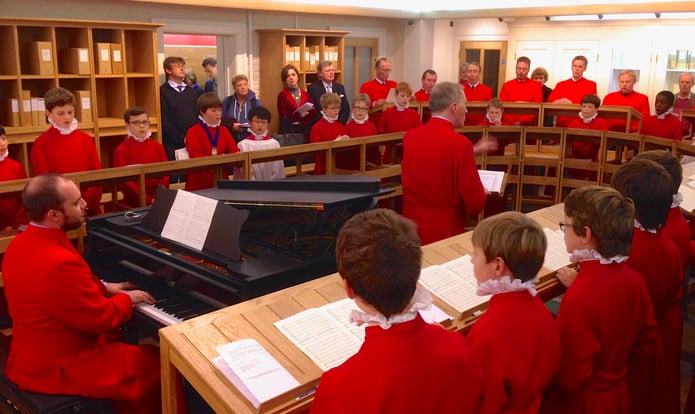
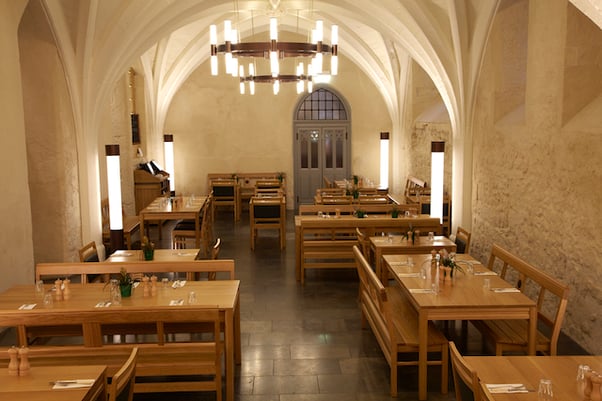
the tables and chairs for the Cellarium café,
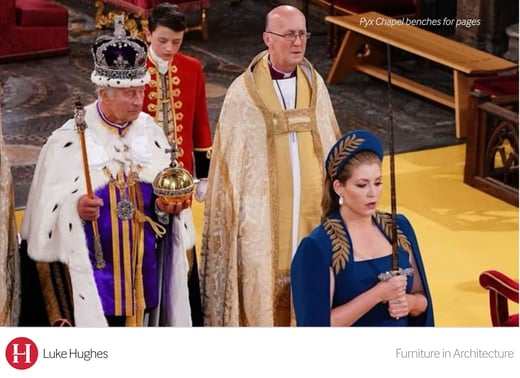
and a set of benches in the Pyx Chamber (the oldest part of the Abbey complex, dating back to 1040, where gold and silver coins kept in ‘pyxes’, or wooden boxes, were trialled for purity). These same benches were re-positioned for the somewhat nervous Royal pages who were not averse to using their service sheets as floor protection!
